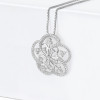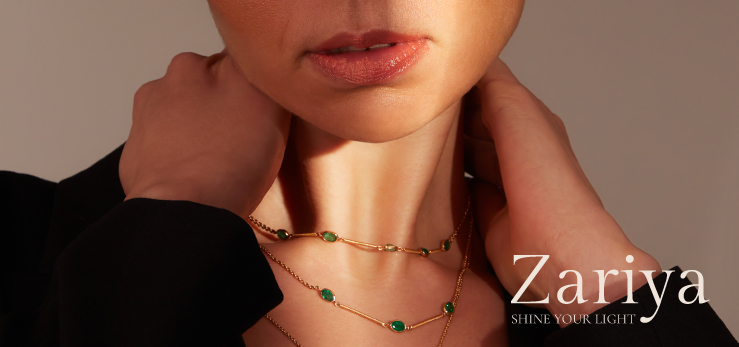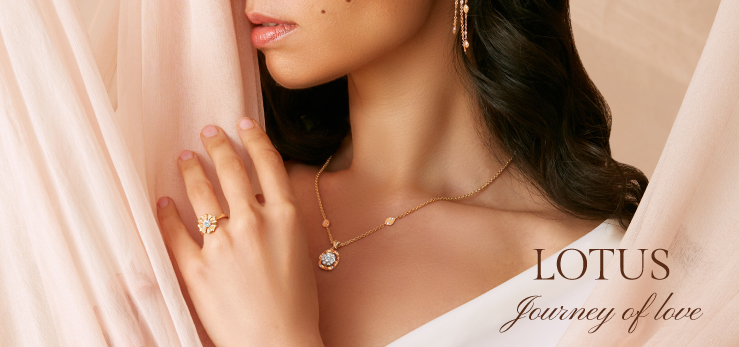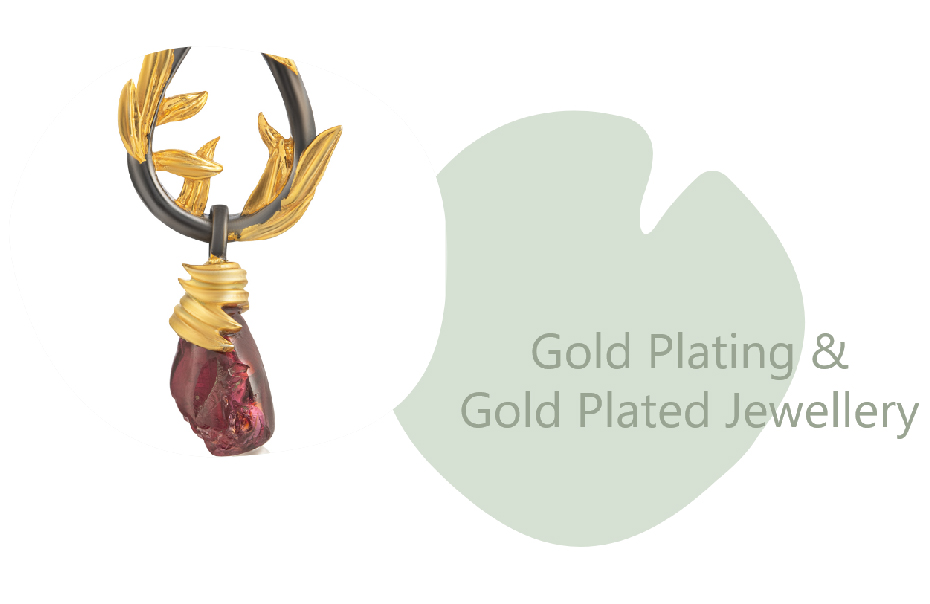The electroplating process uses current to coat the base metal with a layer of another metal in the desired thickness or volume, which is mostly measured with the unit “Micron”. The process of electroplating gives the product a luxurious finish that is long lasting and makes the jewellery look effortlessly flawless.
To make your precious jewels look even more gorgeous than they already are, the process of plating them is practiced. The most acceptable and widely used plating finishes are gold and silver.
The art of plating came into existence in the year 1805 when the great scientist Luigi Brugnatelli was experimenting on the same and connected a wire between a battery and a solution of dissolved gold. He connected a metal object with the wire and commenced the flow of current. Once electricity started flowing, a thin, shiny and smooth layer of gold started getting coated on the metal object that was connected to the wire. This is the history behind how electroplating came into existence.

What Does Gold Plated Mean?
We believe that the process of gold plating jewellery is a scientific one yet at the same time, it is an art.
Gold plating is a process that has the ability to beautifully transform your jewellery from good to gorgeous and give them a new look even after you’ve worn them for several years. So what is gold plating exactly?
The process involves a series of steps.
Primarily, the piece of jewellery is thoroughly cleaned to get rid of any pollutants that might be on the surface. During this step, dirt, impurities and oil on the surface, that would keep the gold layer from bonding correctly, are washed off with the help of steam, ultrasonic and electromagnetic cleaning.

Further, a thin layer of high-quality nickel is coated onto the surface of the jewellery that becomes a barrier for the gold layer and the base metal so as to avoid any reaction between them. Finally, the jewellery is dipped into the plating container with gold and a positive electrical charge. This step coats gold onto the jewellery in the thickness of one’s desire, the jewellery is then hung to dry until it cools down and is ready to be sent further across to be adorned and appreciated. While exploring gold plated jewellery, you are bound to come across some amazing gold plated rings, gold plated earrings, gold plated huggies and gold plated bracelets that can be styled together for a stylish but casual day out. On the other hand, you could find gold plated watches, gold plated hoop earrings, gold, gold plated clip on charms could be worn along with your office formals. You could also make picks from our range of traditional gold plated earrings and gold plated layered necklaces for an upcoming wedding in the family. Not just that, when creating a moodboard for your next vacation, you could plan some gorgeous travel looks for yourself while you mix and match some gorgeous gold plated pendants, gold plated necklaces and gold plated chokers from Purejewels along with your holiday outfits.
How Much Gold is in Gold Plated Jewellery?
Gold plated jewellery has a very thin coating of gold. Therefore there isn’t much gold since the process of electroplating only coats the top surface of the jewellery with a layer of gold to an extent of a few microns. This means that the jewels that have been crafted in less expensive metals like silver; brass or even zinc, are simply coated with an additional and very thin layer of gold evenly.
How Thick Should Gold Plating Be?
Electroplating only coats the top surface of the jewellery with a layer of gold to an extent of a few microns, where 1 micron is equivalent to 0.001 millimeter. Plating in gold can be done in various thicknesses according to the design requirements and aesthetics of the jewellery piece.
The thickness of gold plating normally ranges between .17 microns to 2.5 microns and one can make a decision on the plating thickness based on factors like cost, durability, look and feel.
According to the thickness of the gold coating, gold plating can be categorised into two types.

When a piece of jewellery is said to be flash plated or in other words gold washed, it means that the layer of gold is extremely thin and under .17 micron. In this case, the plating layer comprises only about 0.05% of gold and does not shelter your jewels from heavy wear and tear since this thickness of plating wears off sooner and quite quickly.
The other category is known as micron plating, this is when the jewellery is gold plated in the ideal thickness of around .5 to 1.0 microns. This too is a thin layer of gold, but is quite sufficient to protect jewelry pieces from easy wear and tear, making them more durable and frequently wearable. Some jewellers also prefer to plate their jewels up to a thickness of about 2.5-micron which is quite thick and these pieces are known as heavy gold plated jewels.
What Metals Can Be Gold Plated?
The process of gold plating can possibly be done on almost all metals. Gold plating can be easily done on metals like nickel, brass, stainless steel, silver and copper along with modern industrial metals like tungsten and titanium. Of these, silver and copper are the most commonly plated in gold for jewellery making and other industrial purposes while brass too is becoming quite common and is being used for making gold plated jewellery. Jewellery pieces that are voluminous and substantial in size and are mostly not feasible when it comes to getting them crafted gold, therefore, they are mostly crafted in brass and further plated with gold to achieve a similar look and feel like that of real gold jewellery.
Does Gold Plated Jewellery Tarnish?
Yes, Gold plating can fade and the jewellery might tarnish and could also lose its lustre over time. Although gold is an inert metal that can resist itself from getting rusty or corroded, tarnishing of gold plated jewellery is common. This is not because of the plating quality but because of the chemical properties of the base metal which is prone to corrosion and oxidation. Over time, the molecules of the base metal eventually move into the gold plated layer. If the thickness of gold plating is very thin, the process of discolouration and tarnishing would start much quicker than if the thickness is more, which is preferably around 1 micron.
How to Clean 24k Gold Plated Jewellery?
Once bought, the 24K gold plated jewellery or even your 18K gold plated jewellery needs to be immensely taken care of. Therefore, gold plated jewels need regular cleaning so as to prolong their life. Cleaning them with mild liquid soap can do wonders and increase the life of your jewels substantially.
How to Care For Gold Plated Brass Jewellery?
Before buying gold plated jewellery, it is immensely important for you to find out if the jewel was initially plated with nickel to keep the base metal away from the layer of gold. If this process has been followed, during gold plating, your jewellery would definitely require less care and would still be durable.
Here are a few ways that you can take care of your jewellery
Keep gold plated jewelry away from chemicals, oils and makeup, soaps, detergents and cleaners since they impact the life of gold plated jewelry.
Try to wash your hands before putting on or taking off your jewelry.
Avoid exposing your gold plated jewelry to chlorinated or salty water like in swimming pools, hot tubs or the sea.






























